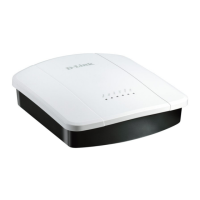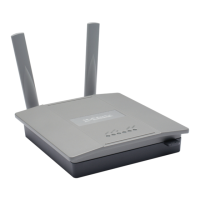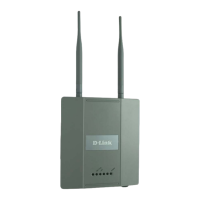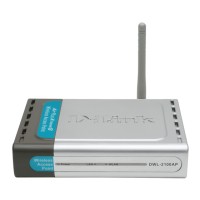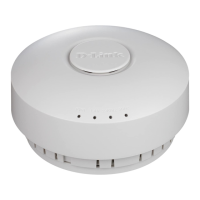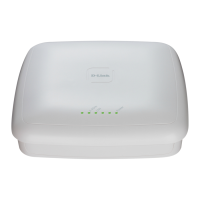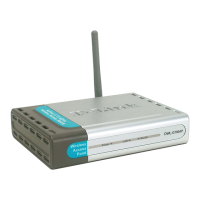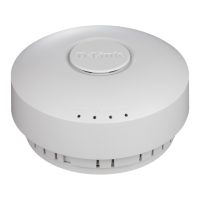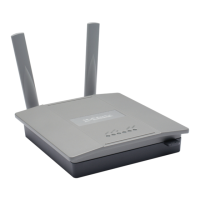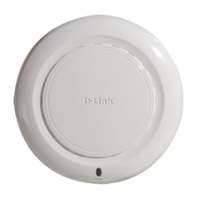Software User Manual D-Link UAP
12/10/09
34CSFP6XXUAP-SWUM100-D13 Viewing Neighboring Access Points Page 35
Table 11 describes the information provided on neighboring access points.
Table 11: Neighboring Access Points
Field Description
AP Detection To enable neighbor AP detection and collect information about neighbor APs, click Enabled.
To disable neighbor AP detection, click Disabled.
MAC Shows the MAC address of the neighboring AP.
Radio The Radio field indicates which radio detected the neighboring AP:
• wlan0 (Radio One)
• wlan1 (Radio Two)
Beacon Int. Shows the Beacon interval being used by this AP.
Beacon frames are transmitted by an AP at regular intervals to announce the existence of the
wireless network. The default behavior is to send a beacon frame once every 100 milliseconds (or
10 per second).
The Beacon Interval is set on the Radio tab page.(See “Modifying Radio Settings” on page 43.)
Type Indicates the type of device:
•AP indicates the neighboring device is an AP that supports the IEEE 802.11 Wireless
Networking Framework in Infrastructure Mode.
• Ad hoc indicates a neighboring station running in Ad hoc Mode. Stations set to ad hoc mode
communicate with each other directly, without the use of a traditional AP. Ad-hoc mode is an IEEE
802.11 Wireless Networking Framework also referred to as
peer-to-peer
mode or an
Independent Basic Service Set
(IBSS).
SSID The
Service Set Identifier
(SSID) for the AP.
The SSID is an alphanumeric string of up to 32 characters that uniquely identifies a wireless local
area network. It is also referred to as the
Network Name
.
The SSID is set on the VAP tab. (See “Configuring Load Balancing” on page 62.)
Privacy Indicates whether there is any security on the neighboring device.
•Off indicates that the Security mode on the neighboring device is set to None (no security).
•On indicates that the neighboring device has some security in place.
Security is configured on the AP from the VAP page.
WPA Indicates whether WPA security is on or off for this AP.
Band This indicates the IEEE 802.11 mode being used on this AP. (For example, IEEE 802.11a, IEEE
802.11b, IEEE 802.11g.)
The number shown indicates the mode according to the following map:
•2.4 indicates IEEE 802.11b, 802.11g, or 802.11n mode (or a combination of the modes)
•5 indicates IEEE 802.11a or 802.11n mode (or both modes)
Channel Shows the Channel on which the AP is currently broadcasting.
The channel defines the portion of the radio spectrum that the radio uses for transmitting and
receiving.
The channel is set in Radio Settings. (See “Modifying Radio Settings” on page 43.)
Rate Shows the rate (in megabits per second) at which this AP is currently transmitting.
The current rate will always be one of the rates shown in Supported Rates.
Signal Indicates the strength of the radio signal emitting from this AP. If you hover the mouse pointer over
the bars, a number appears and shows the strength in decibels (dB).
Beacons Shows the total number of beacons received from this AP since it was first discovered.
Last Beacon Shows the date and time of the last beacon received from this AP.
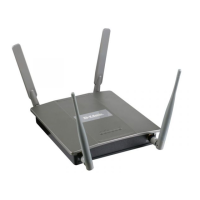
